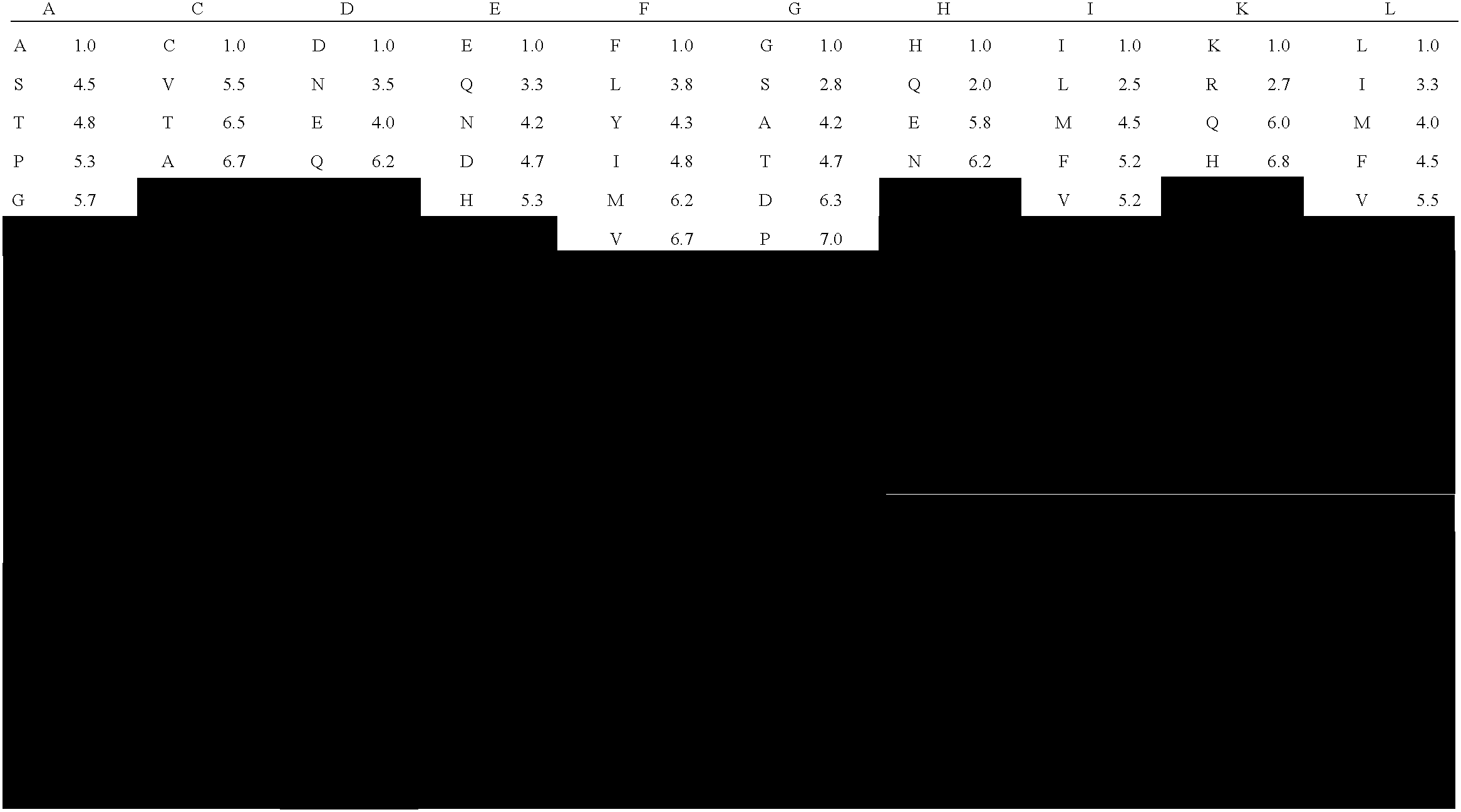Heteroclitic analogs and related methods
a technology of heteroclitic analogs and analogs, applied in the field ofhet, can solve the problems of difficult prediction methods, difficult to perform side-by-side precursor frequency analysis or tcr avidity analysis against wild-type peptides, and difficulty in predicting approaches, so as to improve the ability to effect an immune response
- Summary
- Abstract
- Description
- Claims
- Application Information
AI Technical Summary
Benefits of technology
Problems solved by technology
Method used
Image
Examples
examples
Preparation A
Peptide Synthesis and Generation of Peptide Analogs
[0321] The peptides used in these examples are shown in Table 1. All of the wild-type human CTL epitopes derived from tumor-associated antigens have shown immunogenicity in human and transgenic mouse systems (Kawashima, I., et al., Human Immunol. (1998) 59:1; Ishioka, G., et al., J. Immunol. (1999) 162:3915; Epimmune, unpublished data).
[0322] Peptides that were tested initially for heteroclitic activity were synthesized by Chiron Technologies (Victor, Australia). Peptides requiring further biological characterization were synthesized at Epimmune using conventional methods (Ruppert, J., et al., Cell (1993) 74:929) and their purity was routinely >95%, as determined by analytical reverse-phase HPLC. The identity of the latter peptides was confirmed by mass spectral analysis.
preparation b
Scheme for Selection of Single Amino Acid Substitutions
[0323] Table 2 shows the similarity assignments between any given amino acid pair so that a given amino acid substitution could be characterized as being a conservative, semi-conservative, or non-conservative substitution.
[0324] The degree of similarity between amino acid pairs was quantified by averaging, for each amino acid pair, the rank coefficient scores for PAM250, hydrophobicity, and side chain volume as described below. Based on the average values of these composite rankings, the table shows each pair to be conserved, semi-conserved or non-conserved.
[0325] The Dayhoff PAM250 score (Dayhoff, M. O., et al., Atlas of Protein Sequence and Structure, Vol. 5, suppl.3. (1978) M. O. Dayhoff, ed. National Biomedical Research Foundation, Washington DC, p. 345; Creighton, T. E., Proteins: structures and molecular properties (1993) (2nd edition) W. H. Freeman and Company, NY; http: / / prowl.rockefeller.edu / aainfo / pam250. html) is a...
preparation d
Assay Methods
[0337] 1. Measurement of Peptide Binding Affinity for HLA-A2.1 or HLA-B7 Molecules
[0338] Binding of test peptides to HLA-A2.1 was measured by determining the level of competition induced by a given test peptide for binding of a radiolabeled standard peptide to HLA-A2.1. The percentage of MHC-bound radioactivity was determined by gel filtration and the concentration of test peptide that inhibited 50% of the binding of the labeled standard peptide (IC50) was calculated (Ruppert, J., et al., Cell (1993) 74:929; Sette, A., et al., Mol. Immunol. (1994) 31:813). The standard peptide was the HBV Core.18 epitope (sequence FLPSDFFPSV) (SEQ ID NO:35). A similar assay was performed to determine the binding affinity of peptides to purified HLA-B7 (B*0702) molecules. In the latter assay, the radiolabeled standard peptide was the SS 5-13a (L7→Y) peptide (sequence APRTLVYLL) (SEQ ID NO:36).
[0339] 2. Measurement of Murine and Human IFN-γ, IL-5, and IL-10 Production by CTL
[0340] An ...
PUM
| Property | Measurement | Unit |
|---|---|---|
| Fraction | aaaaa | aaaaa |
| Fraction | aaaaa | aaaaa |
| Magnetic field | aaaaa | aaaaa |
Abstract
Description
Claims
Application Information
 Login to View More
Login to View More - R&D
- Intellectual Property
- Life Sciences
- Materials
- Tech Scout
- Unparalleled Data Quality
- Higher Quality Content
- 60% Fewer Hallucinations
Browse by: Latest US Patents, China's latest patents, Technical Efficacy Thesaurus, Application Domain, Technology Topic, Popular Technical Reports.
© 2025 PatSnap. All rights reserved.Legal|Privacy policy|Modern Slavery Act Transparency Statement|Sitemap|About US| Contact US: help@patsnap.com



